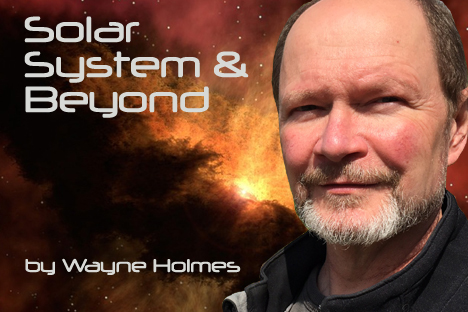Super Moon for New Year's Day
Local Astronomer Wayne Holmes has had an interest in astronomy since receiving his first telescope and began reading about the objects in the sky at a young age. As the coordinator of the Starry Nights program at Taghum Hall as well as multi session astronomy classes as part of the Learning in Retirement program and astronomy programs for schools, Holmes has always had a desire to sky gaze. Thankfully, Holmes has agreed to share his knowledge with a column, Solar System and Beyond, that will appear occasionally in The Nelson Daily.
In January we will see two full Moons, one on the 1st of January and at the end of the month we will have a full Moon and a Lunar eclipse. I will have more information on the Lunar eclipse in the next Solar System and Beyond column, toward the end of the month.
On January 1st, the second “Super” Moon in as many months will rise in the east at sunset. When the Moon is at perigee,(the closest distance to Earth), at 6:24 pm, it will be 356,565 km from us. That is 927 km closer than last month’s “super” Moon and the closest that it will be to us for the entire year. If you missed your chance in December to observe bright Tycho crater and the rays that extend down from it, now is your chance and if someone in your home recieved a telescope for Christmas, some of the bright, white craters on the Moon’s surface are interesting observational targets.
The Moon will appear bigger and brighter than normal and will also be high in the nightime sky. It`s light, reflected off of the snow should make for a very bright night. If you hear wolves howling at the Moon, know that the January full Moon is also known as the “Wolf Moon”.
Early January also gives us the first major meteor shower of the year. The Quadrantid meteor shower peaks January 3rd but viewing will suffer due to the very bright , nearly full Moon. The light from the Moon will wash out all but the brightest of the 50 to 100 meteors per hour that we can expect at it’s peak. If you happen to be outside after midnight, you may be lucky enough to see one or two of the brighter Quadrantid meteors.
The meteor shower radiant is off of the handle of the Big Dipper by a few degrees and is named for a constellation that no longer exists, Quadrans Muralis.
January 3rd also brings our planet Earth to the closest point of it’s orbit around the Sun. At perihelion, (the closest distance), Earth will be only 147,097,233 km away from the Sun. Compare this to the greatest distance that Earth is from the Sun, (aphelion) which is 152,093,481 km in July.
Early risers will have a chance to view a few very nice planetary conjunctions in the pre-dawn eastern sky.
On the mornings of January 6th and 7th you will see Jupiter shining brightly. If you have binoculars or a telescope you will also find orange Mars less than 1/2 of a degree, (about the width of the Moon), from Jupiter. With a telescope or good binoculars, take a closer look and see if you can find Jupiter’s four large Galilean Moons. They will appear as small bright dots and can be on either side of Jupiter.
On January 11th the two planets will be about two degrees apart making it a bit easier to see Mars with the naked eye. They will be joined by the waning crescent Moon.


























